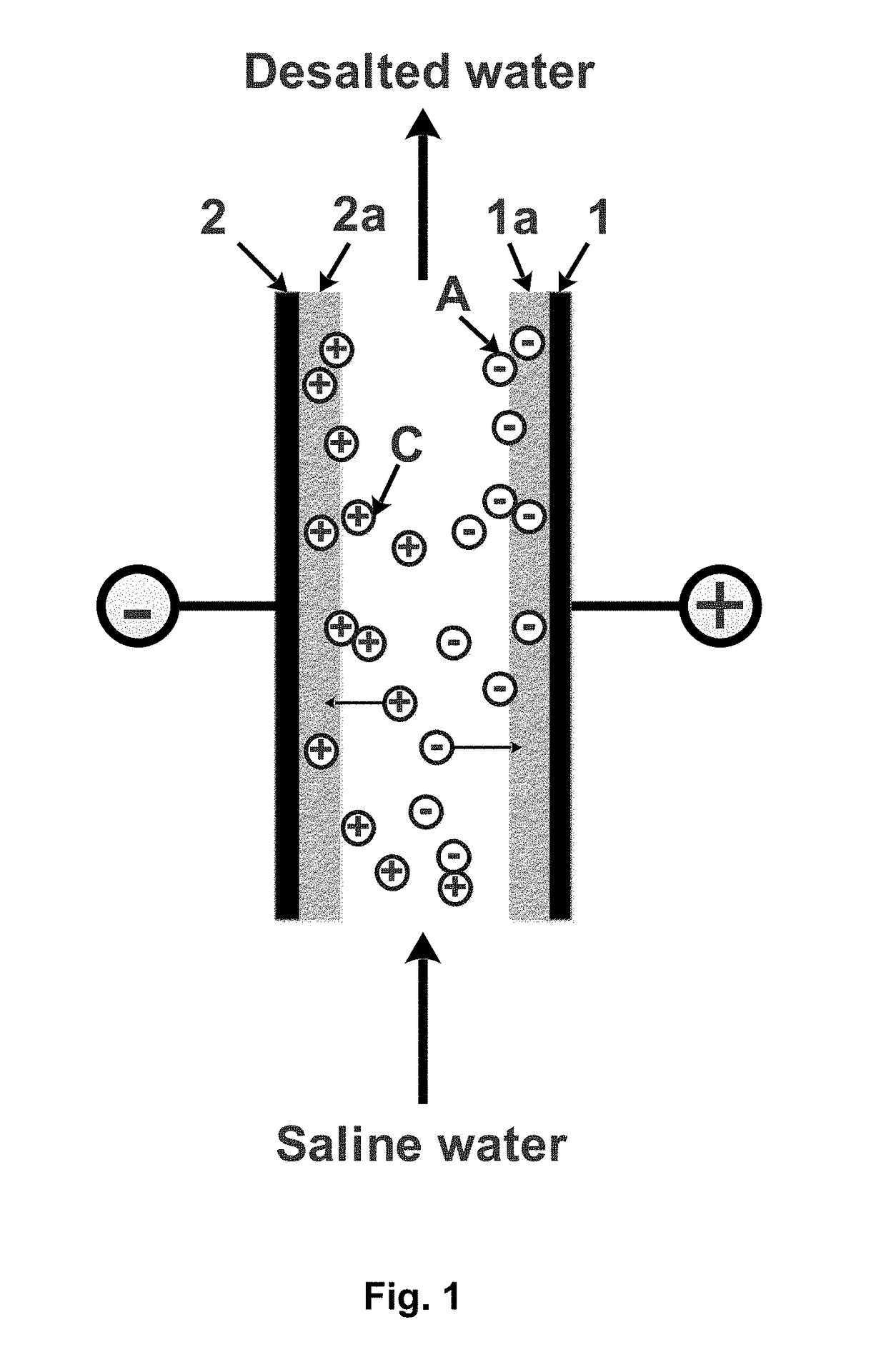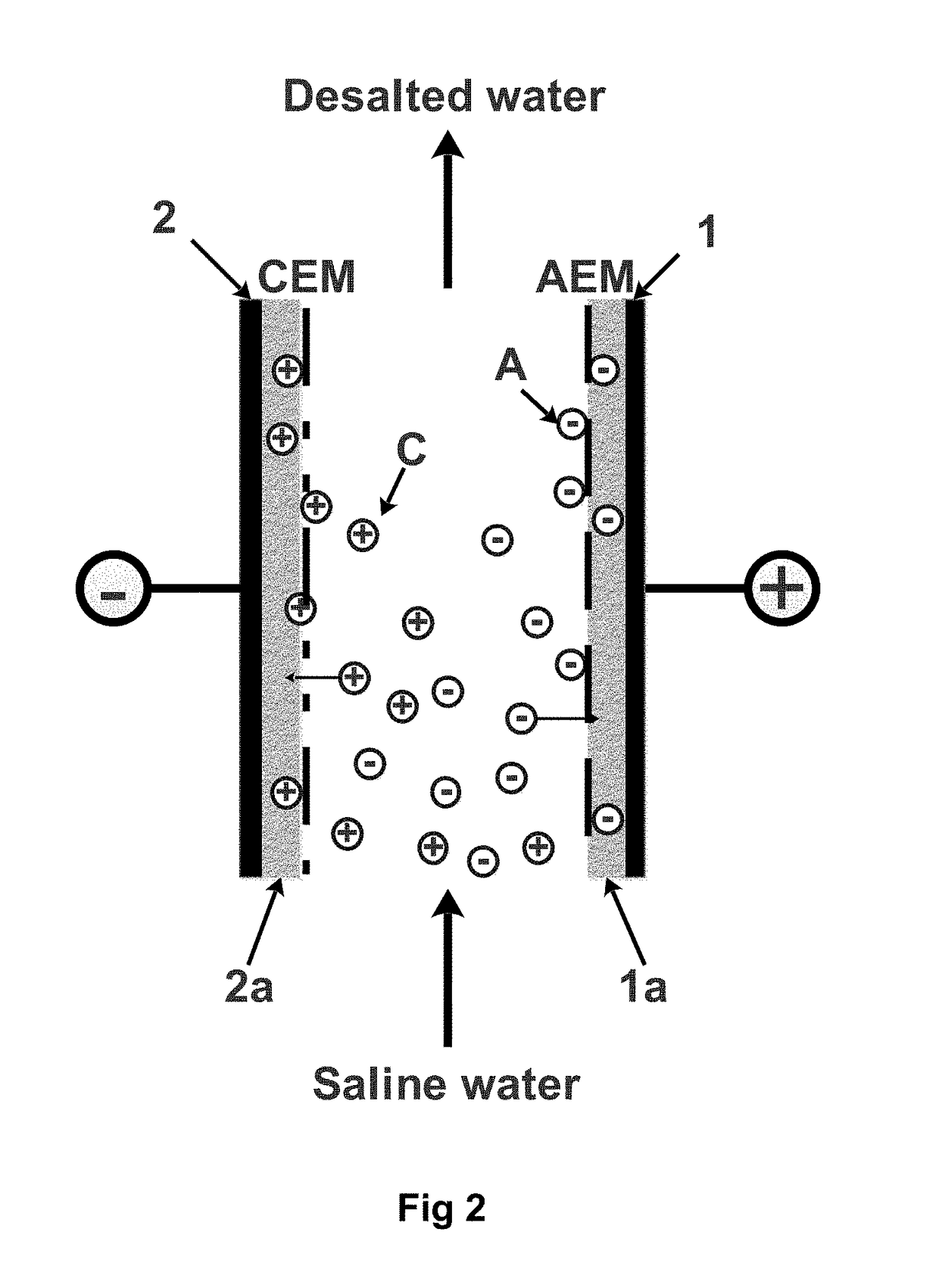Single module, flow-electrode apparatus and method for continous water desalination and ion separation by capacitive deionization
a flowelectrode and capacitive deionization technology, applied in the direction of solid sorbent liquid separation, water/sludge/sewage treatment, cation exchanger, etc., can solve the problems of low water recovery rate, complex and expensive cdi reactor integration, and low energy demand that can still be reduced potentially and other problems, to achieve the effect of improving separation efficiency and reducing energy consumption
- Summary
- Abstract
- Description
- Claims
- Application Information
AI Technical Summary
Benefits of technology
Problems solved by technology
Method used
Image
Examples
example
[0075]In order to further demonstrate the beneficial effects of the apparatus and method according to the present invention, an apparatus for continuous water desalination by capacitive deionization according to the present invention and as shown in FIG. 7 was constructed and operated as follows.
[0076]The first and second current collectors were made of epoxy impregnated graphite plates (supplied by Müller & Rössner GmbH & Co. KG, Troisdorf, Germany) with an engraved flow channel, serving as compartment for the flow electrode, of 3 mm width, 3 mm deep and 189 cm overall length. A fluid containing suspended conductive particles (flow electrode) having a volume of 100 ml and containing 5% (w / v) of activated carbon (Norit® D10, supplied by Cabot Corporation, Alpharetta, Ga., USA) was recirculated between the apparatus and a magnetically stirred storage container at a flow rate of 60 ml / min. Two anion exchange membranes (Fumasep® FAS-PET-130 / ED-100, supplied by FuMA-Tech Gesellschaft fü...
PUM
| Property | Measurement | Unit |
|---|---|---|
| thickness | aaaaa | aaaaa |
| ion adsorption capacity | aaaaa | aaaaa |
| concentration | aaaaa | aaaaa |
Abstract
Description
Claims
Application Information
 Login to View More
Login to View More - R&D
- Intellectual Property
- Life Sciences
- Materials
- Tech Scout
- Unparalleled Data Quality
- Higher Quality Content
- 60% Fewer Hallucinations
Browse by: Latest US Patents, China's latest patents, Technical Efficacy Thesaurus, Application Domain, Technology Topic, Popular Technical Reports.
© 2025 PatSnap. All rights reserved.Legal|Privacy policy|Modern Slavery Act Transparency Statement|Sitemap|About US| Contact US: help@patsnap.com



